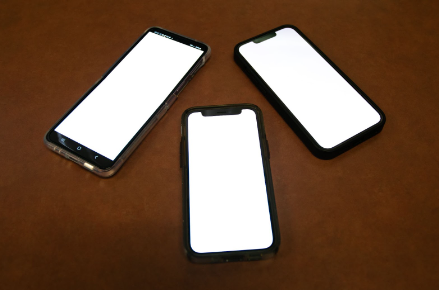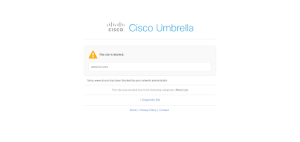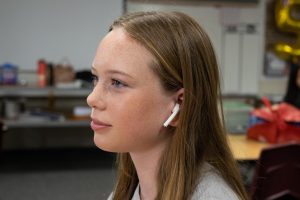Shining Light on the Effects of Blue Light

Blue light can have some extremely harmful effects on your eyesight.
April 27, 2023
One look around you reveals all that you need to know. Cell phones are all over, faces glued to tiny screens, drawing in the eyes of nearly every teen at the mall, restaurant, family table, and school quad. Screens are omnipresent, all the time. While these devices are essential to how we live our lives by providing instant response and convenience, the blue light they emit is causing far more harm than good.
Almost all users of these devices know about blue light’s harmful impact on the eyes. Some of these effects can be noticed immediately for those who feel eye strain or irritation.
“Blue light from computer screens and digital devices can decrease contrast leading to digital eyestrain. Fatigue, dry eyes, bad lighting, or how you sit in front of the computer can cause eyestrain. Symptoms of eyestrain include sore or irritated eyes and difficulty focusing,” said Prevent Blindness.
Since devices that emit this blue light have become so essential to daily life, people constantly find themselves experiencing these deleterious effects.
“Digital eye strain, otherwise known as Computer Vision Syndrome (CVS), is the result of excessive screen use. Its effects are widespread – recent reports show that more than 60 percent of Americans experience symptoms of CVS,” said Rebuild Your Vision.
This isn’t the only issue. Data shows that children in particular receive more eye damage from these devices.
“Children absorb 45% more toxic blue light through the retina than people 25 and older, and children often hold digital devices closer to their faces potentially exposing them to 4x higher amount of blue light,” said eyesafe.com.
Through the years of middle school, children still have the highest vulnerability to blue light.
“Children’s eyes are much more sensitive to blue light because, until the age of 14-15, their eyes are not yet fully developed,” said Block Blue Light.
This is especially concerning, because children absorb more blue light than adults, as we are constantly using our devices for class work, homework, social media, and connecting with friends and family.
“I spend around 2-3 hours on my phone and 5-6 hours on my laptop per day. In total, I spend around 7-8 hours on my devices every day, most of the time I’m on my device for school work. I spend the rest of my time texting or using social media,” said Zareen Y.
Not only does blue light affect our eyes, it also affects our skin. Artificial blue light causes more damage to our skin than the sun does because blue light from devices has shorter wavelengths than ultraviolet (UV) rays do.
“Blue light has the shortest wavelengths detectable by the human eye, between 400–500 nanometers UV light is invisible and has a wavelength below 400 nanometers,” said Verywell Health.
These short wavelengths have been linked to skin issues such as premature aging, damaged skin barriers, and changes in pigmentation.
“Studies have revealed that longer exposure to high-energy blue light can increase the amount of DNA damage, cell and tissue death, and injury, eye damage, skin barrier damage, and photoaging,” said PubMed.
In today’s tech world, cell phones aren’t going anywhere anytime soon. It is unlikely that we will stop exposure to artificial blue light, but there are still precautions to take. Limiting screen time or putting on blue light glasses decrease the risk of damage. After all, too much of anything isn’t good for anyone.





